UPSC Daily Current Affairs: 8th February 2025 | Current Affairs & Hindu Analysis: Daily, Weekly & Monthly PDF Download
GS2/International Relations
US President Trump Imposes Sanctions on the International Criminal Court
Source: The Hindu
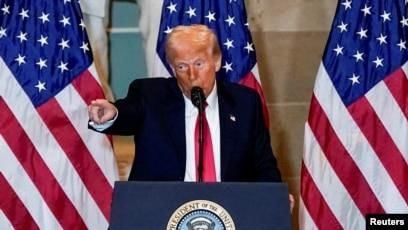 Why in News?
Why in News?
U.S. President Donald Trump signed an executive order imposing sanctions on the International Criminal Court (ICC) in response to its investigations into Israel, a close ally of the United States.
- The ICC issued an arrest warrant for Israeli Prime Minister Benjamin Netanyahu related to alleged war crimes in Gaza.
- Both the U.S. and Israel do not recognize the ICC's jurisdiction, which has led to criticism of the court's actions.
- Trump's sanctions threaten significant consequences for ICC officials involved in the investigations.
Additional Details
- Background: The sanctions were imposed after the ICC issued an arrest warrant for Netanyahu and former Defense Minister Yoav Gallant for military actions in Gaza following the October 2023 Hamas attack, which resulted in numerous Palestinian casualties.
- Reasons for Sanctions: The U.S. argues that the ICC is overstepping by prosecuting leaders of non-member states, and that such actions are unacceptable against U.S. allies.
- Significance of Sanctions: The executive order could lead to freezing of assets of ICC officials, travel bans for their families, and legal repercussions for those assisting the ICC.
- Criticism: Human rights organizations, such as Human Rights Watch and the ACLU, have condemned the sanctions, arguing they undermine international justice and accountability.
- Political Implications: The sanctions may strengthen U.S.-Israel relations while straining ties with European nations that support the ICC.
This executive order illustrates the ongoing tensions between U.S. foreign policy and international legal frameworks, particularly regarding accountability for military actions by allies.
GS3/Science and Technology
Biotechnology for Economy, Environment and Employment (BioE3) Policy
Source: The Week
Why in News?
In August 2024, the Department of Biotechnology (DBT) received approval to initiate consultations with State governments regarding the establishment of biomanufacturing facilities across India.
- The BioE3 Policy is a national initiative aimed at promoting biomanufacturing and a circular bioeconomy in India.
- It focuses on the industrial production of bio-products, enhancing research and innovation, and creating employment opportunities.
- The policy aligns with India’s commitment to achieving Net Zero carbon emissions.
Additional Details
- Biomanufacturing: This involves the industrial production of bio-products such as biopolymers, enzymes, smart proteins, functional foods, precision biotherapeutics, and climate-resilient agricultural products.
- Objectives of the BioE3 Policy:
- Promote the establishment of biomanufacturing hubs and biofoundries.
- Strengthen research and development (R&D) alongside innovation.
- Implement state-centric approaches focusing on local bio-based industries.
- Develop workforce training programs in smaller cities.
- Ensure compliance with global biosafety standards.
- Support carbon capture technologies and sustainable agricultural practices.
- Encourage private sector investments through a supportive environment for biotech startups.
- Programs Implemented Under the BioE3 Policy:
- State-Centric BioE3 Cells to coordinate investments and policy execution.
- Research initiatives on precision biotherapeutics and functional foods.
- Development of carbon capture technologies.
- Promote public-private partnerships for biomanufacturing investments.
Overall, the BioE3 Policy aims to make biomanufacturing a significant driver of economic growth while addressing environmental sustainability and employment generation.
Previous Year Question (PYQ):
With reference to bio-toilets used by the Indian Railways, consider the following statements:
1. The decomposition of human waste in the bio-toilets is initiated by a fungal inoculum.
2. Ammonia and water vapour are the only end products in this decomposition which are released into the atmosphere.
Which of the statements given above is/are correct?
(a) 1 only
(b) 2 only
(c) Both 1 and 2
(d) Neither 1 nor 2
GS3/Economy
RBI Reviews Economic Capital Framework: Implications for Risk Buffer and Surplus Transfers
Source: Economic Times
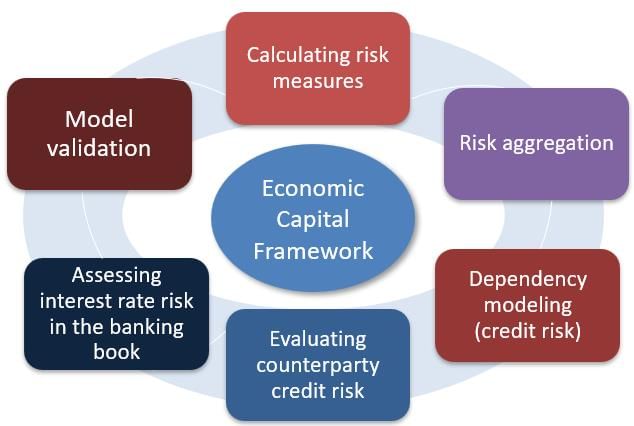 Why in News?
Why in News?
The Reserve Bank of India’s (RBI) Governor recently announced that the central bank is undertaking a review of the Economic Capital Framework (ECF).
- The ECF outlines how the RBI manages its financial reserves, risk provisioning, and surplus transfers to the government.
- The current contingency risk buffer (CRB) is set at 6.5% as of March 31, 2024, following recommendations from the Bimal Jalan Committee.
- The review aims to evaluate whether the CRB requires adjustments based on evolving economic conditions.
- A record surplus transfer of ₹2.11 lakh crore was approved for the financial year 2023-24.
Additional Details
- Economic Capital Framework (ECF): The ECF is a policy mechanism that guides the RBI in managing its financial reserves and provisioning against risks. It includes guidelines for maintaining a contingency risk buffer (CRB) to safeguard against unforeseen economic crises.
- Bimal Jalan Committee: Formed in 2018, this committee recommended maintaining the CRB between 5.5% to 6.5% of the RBI’s balance sheet, ensuring the RBI can act effectively as the Lender of Last Resort during financial crises.
- Impact of ECF Review: The ongoing review could affect the amount of surplus the RBI transfers to the government. An increase in CRB requirements may reduce surplus funds available for government transfers, while a decrease could free up more resources.
- Significance of Surplus Transfers: Surplus transfers from the RBI play a crucial role in supporting government spending, fiscal policies, and managing the fiscal deficit.
The RBI's review of the Economic Capital Framework is a significant process that will influence the allocation of financial reserves and surplus distributions in the future. The outcomes of this review will have lasting implications for India's economic and fiscal stability.
GS3/Science and Technology
India's AI Revolution - Seizing the Future
Source: Money Control
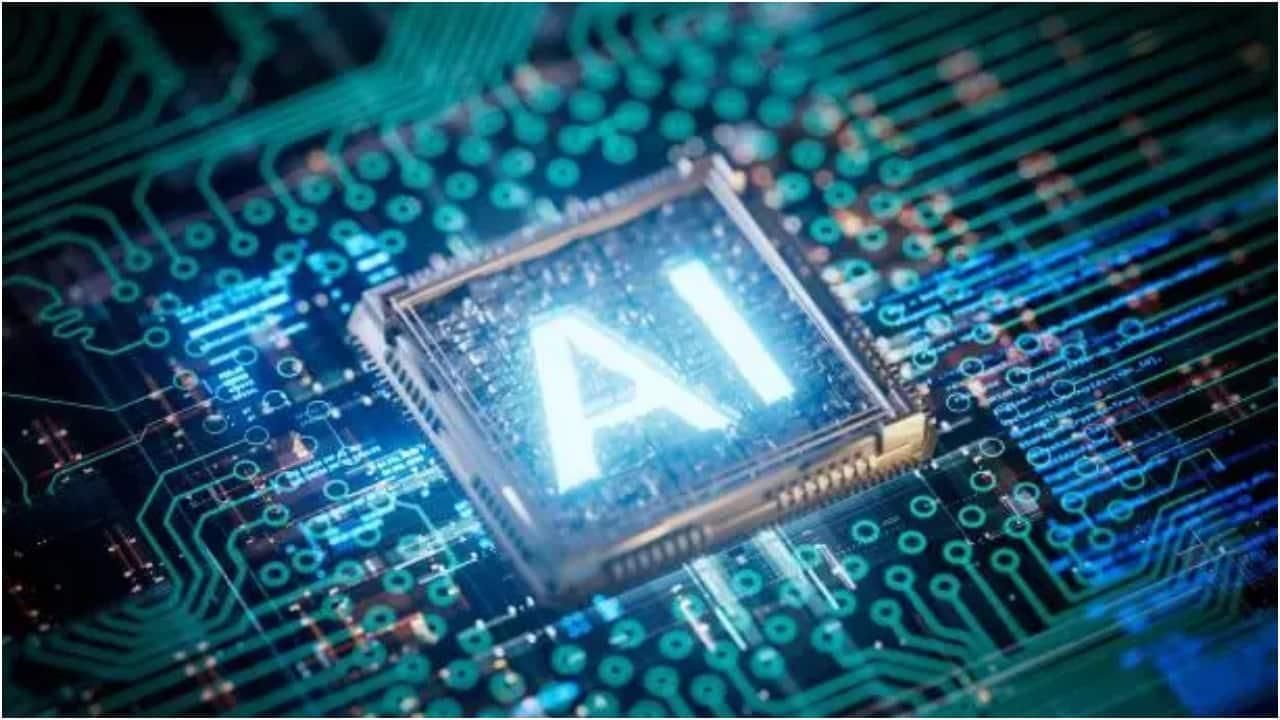 Why in News?
Why in News?
The global AI race is intensifying, with significant investments being made in semiconductor technology, particularly by the US. This creates an opportunity for India to emerge as a leader in artificial intelligence (AI) due to its strong digital infrastructure and skilled workforce.
- India possesses a robust ecosystem for both public and private innovation.
- With a large pool of AI professionals and a significant market potential, India is positioned as a major player in the AI landscape.
- Government initiatives and a thriving startup ecosystem support AI development.
Additional Details
- India’s Strengths in AI:
- India has over 14 million businesses registered under GST and 863 million internet users, contributing to a projected 13.42% growth rate in the digital economy.
- With around 420,000 AI professionals and a 92% adoption rate, India leads in global enterprise AI integration.
- The AI market in India has the potential to reach $17 billion.
- Government Initiatives: The IndiaAI Mission demonstrates the government's commitment to fostering a conducive environment for AI, with over 240 generative AI startups, 70% of which focus on specific industries like healthcare and education.
- Digital Public Infrastructure (DPI):
- Bank account penetration has increased from 30% to 80% in seven years, and the cost of opening a bank account has significantly decreased.
- India processes 49% of global real-time payments through UPI, showcasing its advanced digital payment systems.
- During the COVID-19 pandemic, the government quickly transferred $4.5 billion to 160 million people, providing essential financial assistance.
- Challenges and Need for AI Hardware Development:
- India's dependence on foreign AI hardware, particularly GPUs, poses a challenge, as these are primarily controlled by the US.
- Strategic development of indigenous AI hardware is essential for technological sovereignty and will enable India to become a significant player in the global supply chain.
- Recent Global Developments in AI:
- The US has committed billions to semiconductor investments, particularly through the Stargate initiative, aiming to secure its AI leadership.
- China has introduced an open-source AI model, DeepSeek, which challenges proprietary systems with its cost-efficiency.
- Roadmap for India’s AI Leadership:
- India's AI development must be inspired by cost-effective practices, similar to ISRO’s frugal engineering.
- Encouraging an open-source AI ecosystem and building sovereign AI models based on Indian datasets is critical.
- Multilingual AI models must be developed to accommodate India's diverse linguistic landscape.
- Advocating for global AI leadership and policy changes is essential for India to improve its position in the international AI arena.
In conclusion, India has the foundational elements necessary to transition from being a service provider to a global AI innovator. By making strategic investments in AI infrastructure, talent development, and policy support, India can significantly influence the future of AI technology and possibly emerge as a technological superpower in this decade.
GS3/Science and Technology
Technology and the Challenge of Equitable Education
Source: The Hindu
Why in News?
The evolution of digital technology in India over the past three decades has created both opportunities and challenges in the field of education. The COVID-19 pandemic has significantly accelerated the digital transformation in rural India, pushing towards a more integrated digital education model. Data from the Annual Status of Education Report (ASER) highlights the increased accessibility of smartphones and digital learning tools, showcasing technology's potential to bridge educational gaps. However, challenges persist in ensuring equitable access and effective learning outcomes for underprivileged communities.
- The rise of smartphone ownership in rural households has increased from 36% in 2018 to 84% in 2024.
- Digital education tools have become crucial during the pandemic, serving as substitutes for traditional learning methods.
- Despite advancements, issues such as limited access to devices, digital literacy, and inconsistent school attendance remain significant barriers.
- AI presents new opportunities for personalized and accessible learning experiences.
- Strategic implementation is necessary to ensure technology benefits the underprivileged effectively.
Additional Details
- Access to Devices and Connectivity: Although smartphone ownership is up, many families still share devices, limiting individual access for children. Rural areas often suffer from poor internet connectivity and high costs.
- Digital Literacy: Many rural students, parents, and teachers lack the skills needed to effectively use digital educational tools, hampering their ability to engage with available resources.
- Learning Fragmentation: Variability in school types and attendance disrupts consistent educational experiences, making it difficult for digital learning to be integrated effectively.
- Language Barriers: Most high-quality educational content is in English, which poses challenges for non-English speakers, despite improvements in AI translation tools.
- Future of AI in Education: AI can customize learning experiences and offer real-time feedback, helping to overcome some barriers to access and engagement.
In conclusion, while the surge in smartphone access has opened new avenues for learning, addressing the persistent challenges is essential for meaningful progress. The potential of AI and emerging technologies must be harnessed to ensure that they are accessible to all, particularly marginalized groups. A balanced approach that emphasizes innovation, affordability, and inclusivity will be crucial in realizing the true benefits of digital education in India.
GS2/International Relations
Donkey Route: A Harrowing Journey for Indian Deportees
Source: Mint
 Why in News?
Why in News?
Indian deportees arriving in Amritsar have recounted their traumatic experiences using the "donkey route" for illegal immigration, highlighting the dangers and challenges they faced during their journey.
- The "donkey route" refers to a perilous and unplanned journey undertaken for illegal immigration.
- It often involves crossing multiple international borders through treacherous terrain and illegal means.
Additional Details
- Definition of Donkey Route: Named after a Punjabi idiom, the donkey route signifies an arduous journey filled with uncertainty and risk.
- Process of Illegal Immigration: Immigrants may acquire a tourist visa for the Schengen Area, which allows movement across 26 countries, and then illegally enter the UK with the aid of agents.
- Role of Agents: These agents charge substantial fees for services that include providing fake documentation and facilitating smuggling operations.
The testimonies of deportees shed light on the grim realities of illegal immigration and the lengths individuals will go to in pursuit of a better life, often facing life-threatening situations along the way.
GS3/Economy
Gold Investments in India Surge by 60% in 2024: World Gold Council Report
Source: DD News
 Why in News?
Why in News?
According to the World Gold Council, gold investments in India saw a remarkable increase of 60% in 2024, totaling $18 billion (approximately Rs 1.5 lakh crore) compared to the previous year, highlighting a significant trend in the gold market.
- Gold recorded its strongest annual price rise since 2010, influenced by geopolitical uncertainties and interest rate expectations.
- India accounted for 20% of the global gold investment demand, which reached 1,180 tonnes in 2024.
- The Reserve Bank of India (RBI) added 73 tonnes of gold to its forex reserves in 2024, raising gold's share to a record 11%.
Additional Details
- World Gold Council (WGC): Founded in 1987, the WGC aims to stimulate and sustain demand for gold, promoting it as a strategic asset with a responsible supply chain.
- Cultural Significance: Gold is deeply rooted in Indian culture, being a popular choice for festivals and weddings, with bridal jewelry alone accounting for at least half of the gold jewelry market share in India.
- Investment and Hedge Against Uncertainty: Gold is perceived as a safe haven investment during economic instability, driven by global tensions such as geopolitical conflicts.
- Inflation Hedge: Gold serves as a hedge against inflation; for every 1% increase in inflation, gold demand rises by 2.6%.
- Central Bank Buying: Central banks, including the RBI, are increasing gold holdings, with the RBI purchasing 19 tonnes in just the first quarter of 2024.
- Weakening Dollar: A weaker US dollar makes gold cheaper for foreign investors, which boosts demand and increases prices.
The surge in gold investments reflects ongoing economic uncertainties and cultural preferences for gold in India, emphasizing the need for policies that address both the advantages and drawbacks of high gold imports.
GS3/Environment
Cascade Range
Source: Live Science
Why in News?
Recent research has uncovered that the long-dormant volcanoes in the Cascade Range of the Pacific Northwest are still harboring significant magma reservoirs beneath them, which could indicate potential volcanic activity in the future.
- The Cascade Range is a major mountain range located in the Pacific Northwest of the United States and southwestern Canada.
- It was formed by the subduction of the Juan de Fuca Plate beneath the North American Plate, which is still responsible for ongoing volcanic activity.
- Home to 4,375 named mountains, the highest peak is Mount Rainier, which stands at 4,392 meters.
- The range features a mix of volcanic and non-volcanic mountains, including the dramatic North Cascades and notable volcanoes of the High Cascades.
- The Cascades are part of the Pacific Ring of Fire, an area known for its volcanic activity.
Additional Details
- Geological Significance: The Cascade Range has been the site of all known historic eruptions in the contiguous United States, highlighting its importance in the study of volcanoes.
- It is characterized by snow-capped peaks, massive glaciers, steep scree slopes, and rich forests, making it a vital ecological zone.
- Research indicates that the presence of large magma reservoirs suggests that these volcanoes are not as dormant as previously believed.
This new information about the Cascade Range underscores the need for ongoing monitoring of these volcanoes, given their potential impact on surrounding areas should they become active again in the future.
GS3/Science and Technology
Marsupials and In-Vitro Fertilization Breakthrough
Source: NDTV
 Why in News?
Why in News?
A recent accomplishment by scientists has led to the successful creation of the first kangaroo embryos through in vitro fertilization (IVF), marking a significant advancement in the conservation efforts for endangered marsupial species.
- The production of kangaroo embryos via IVF could aid in conserving endangered marsupials.
- Marsupials are unique mammals that typically give birth to underdeveloped young, which are carried in pouches.
Additional Details
- Marsupials: This group of mammals is often referred to as pouched mammals. Notable examples include kangaroos, koalas, wombats, and the extinct thylacine.
- Over 330 species of marsupials exist, with approximately two-thirds residing in Australia and the remainder primarily in South America.
- In-Vitro Fertilization (IVF): A medical procedure designed to help individuals or couples experiencing fertility issues. It is considered the most common and effective form of assisted reproductive technology (ART).
- The IVF process involves retrieving eggs from the ovaries and fertilizing them with sperm in a laboratory setting before implanting the embryo into the uterus.
The advancements in IVF for marsupials not only enhance reproductive possibilities but also play a crucial role in the conservation of these unique species, ensuring their survival for future generations.
GS2/Governance
Swavalambini Programme
Source: The Hindu
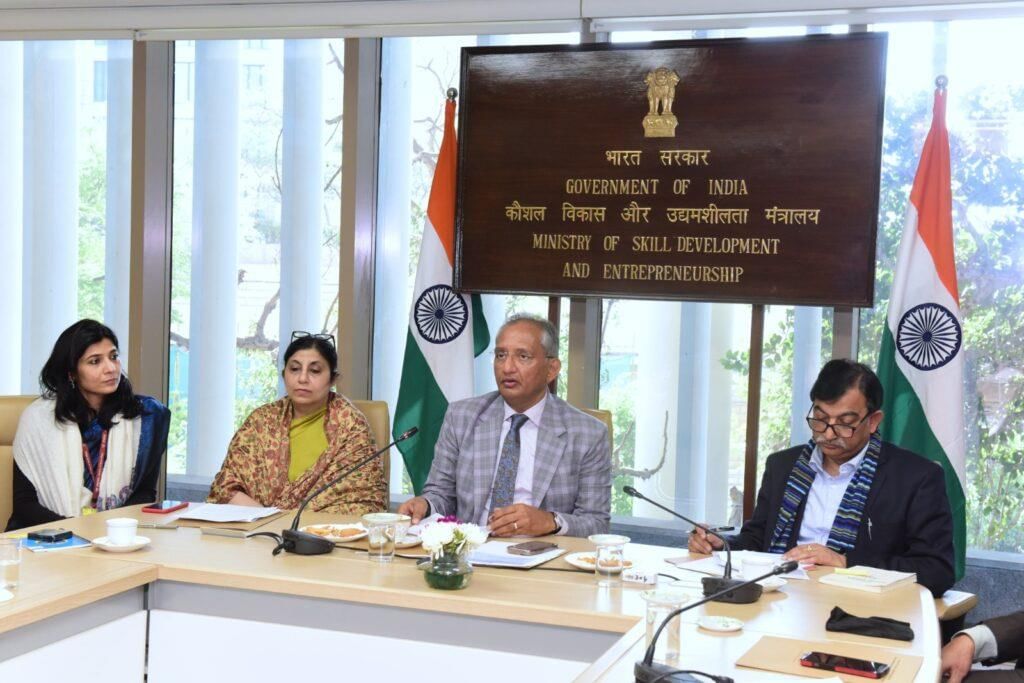 Why in News?
Why in News?
The Union Ministry of Skill Development and Entrepreneurship has recently launched the Swavalambini programme to empower female students in the northeastern region of India.
- The programme is a collaborative effort between the Ministry of Skill Development and Entrepreneurship (MSDE), the Indian Institute of Entrepreneurship (IIE), and NITI Aayog.
- It targets select Higher Education Institutions (HEIs) in Assam, Meghalaya, and Mizoram.
- The initiative aims to equip female students with the entrepreneurial mindset, resources, and mentorship necessary for success in their ventures.
Additional Details
- Entrepreneurship Awareness Programme (EAP): This structured training introduces 600 female students to entrepreneurship as a viable career option.
- Women Entrepreneurship Development Programme (EDP):300 selected students will undergo an intensive 40-hour training covering essential business aspects such as:
- Training and skilling
- Access to finance
- Market linkages
- Compliance and legal support
- Business services
- Networking opportunities
- Participants will also receive six months of mentorship and handholding support to help translate their ideas into sustainable business prospects.
- Successful candidates will be recognized and awarded, aiming to inspire others through their success stories.
The Swavalambini programme represents a significant initiative to nurture and scale women-led enterprises in India, providing the necessary support for female entrepreneurship in the northeastern states.
GS3/Economy
Repo Rate Cut by RBI - A Shift in Monetary Policy
Source: Hindustan Times
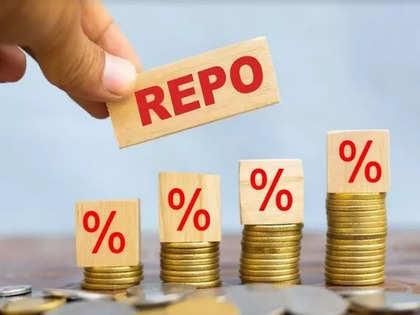 Why in News?
Why in News?
The Reserve Bank of India’s (RBI) Monetary Policy Committee (MPC) has recently reduced the repo rate by 25 basis points (bps) to 6.25%. This marks the first rate cut in 57 months, aimed at bolstering economic growth while addressing easing inflation projections.
- The repo rate has been decreased from 6.5% to 6.25%.
- Inflation projections indicate a decline to 4.4% this quarter and further to 4.2% in 2025-26.
- This reduction may lead to cheaper loans for various purposes, including homes and cars.
- This is the first rate cut since May 2020, when the rate was lowered to 4% during the COVID-19 pandemic.
Additional Details
- Digital Security Initiative: The RBI has introduced the ‘bank.in’ domain to enhance trust in digital transactions, aimed at reducing cybersecurity threats and preventing phishing.
- Implementation Schedule: The Institute for Development and Research in Banking Technology (IDRBT) will manage registrations, commencing in April 2025, with further guidelines for banks to be issued.
- Global Economic Considerations: The MPC has adopted a neutral monetary stance despite the rate cut, considering geopolitical tensions and market volatility as significant risks.
- GDP Growth Forecast: The real GDP growth is projected at 6.4% for the current financial year (2024-25) and 6.7% for 2025-26, with factors like improved employment conditions and stable agricultural output aiding this growth.
- The Indian rupee has seen a depreciation of 3.2% against the US dollar since November 2024, with the RBI focusing on maintaining stability in currency markets.
- Market Reactions: Following the MPC decisions, stock markets exhibited caution, with declines in the Sensex and Nifty, while the BSE Bankex also fell by 0.49%.
The RBI's recent rate cut signifies a strategic shift in monetary policy aimed at stimulating economic growth while continuing to monitor inflation levels. The introduction of the ‘bank.in’ domain reflects a commitment to bolster the digital financial ecosystem in India. As market reactions unfold, stakeholders remain vigilant for further policy guidance from the RBI.
GS3/Environment
Bhimgad Wildlife Sanctuary
Source: Times of India
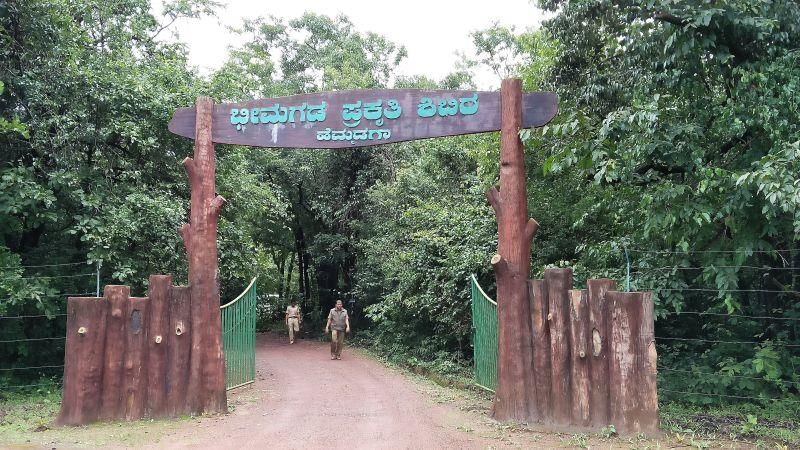 Why in News?
Why in News?
The recent decision by the state government to initiate a wildlife safari in the Bhimgad Wildlife Sanctuary (BWS), located in Khanapur, has drawn significant criticism from environmentalists and the public.
- BWS is situated in the Western Ghats of Belgaum district in Karnataka.
- The sanctuary was officially designated as a wildlife sanctuary in December 2011.
- It is named after the historical Bhimgad Fort, built under the command of Shivaji in the 17th century to defend against Portuguese forces.
- BWS shares boundaries with several other protected areas, enhancing its ecological significance.
Additional Details
- Geographical Importance: BWS is crucial as it forms the headwaters of several rivers, including the Tillari, Malaprabha, and Mhadei, along with numerous perennial streams.
- Unique Biodiversity: The sanctuary is renowned for the Barapede caves, which are the only known breeding grounds for the endangered Wroughton's free-tailed bat.
- Flora: The sanctuary's vegetation consists of a mix of tropical and subtropical moist broadleaf forests along with grasslands. It also features various medicinal plants.
- Fauna: BWS is home to a rich variety of wildlife, including elephants, king cobras, wild dogs, foxes, chitals, spotted deer, sambar, sloth bears, gaurs, leopards, and tigers.
The controversy surrounding the wildlife safari highlights the ongoing tension between conservation efforts and tourism development within sensitive ecological zones.
|
59 videos|5388 docs|1140 tests
|
FAQs on UPSC Daily Current Affairs: 8th February 2025 - Current Affairs & Hindu Analysis: Daily, Weekly & Monthly
| $1. What are the implications of US President Trump's sanctions on the International Criminal Court (ICC)? |  |
| $2. How does the BioE3 policy aim to improve the economy, environment, and employment in India? |  |
| $3. What are the key findings of the RBI's review of the Economic Capital Framework? |  |
| $4. How is India's AI revolution impacting various sectors? |  |
| $5. What challenges do Indian deportees face on the Donkey Route? |  |





















